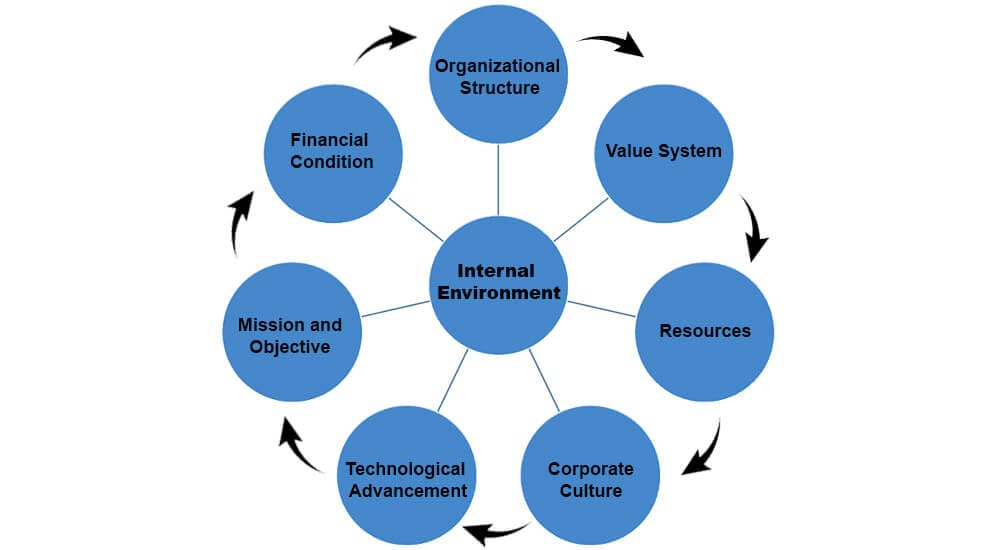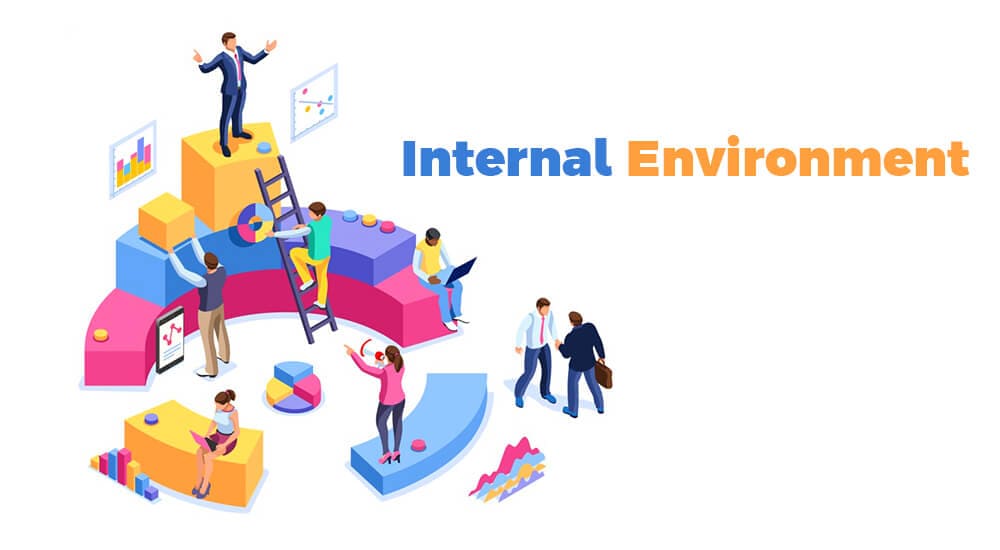Definition: The internal environment of an organization is a set of conditions that dictate the atmosphere within an organization. It defines the relationship inside the organization and how employees behave.
The internal environment includes culture, processes, procedures, and relationships with co-workers, bosses, management, etc.
The internal environment affects how employees work and behave. For example, employees will follow the manager’s instructions in a traditional internal environment. Here, managers have little interaction with their subordinates, and most interactions are in the form of instructions.
While there is a formal relationship between employees and their supervisors in modern organizations, managers are not as strict in modern organizations compared to the traditional environment.
The manager is involved with work, guides employees, and provides them an opportunity to grow their careers.
Factors Affecting an Organization’s Internal Environment

- Organizational Structure
- Value System
- Resources
- Corporate Culture
- Technological Advancement
- Mission & Objectives
- Financial Conditions
Organizational Structure
The organizational structure plays a crucial role in how activities are defined and the chain of command is followed. The organizational structure can be projectized, matrix, and functional.
Each organizational structure has a different work culture; for example, projectized organizations have a fast-moving and dynamic work culture while the functional structure has a more stable environment.
Value Stream
An organization’s value system defines how it treats its staff and customers. The employees must work within the value stream of the organization. The value stream includes regulator frameworks such as policies, procedures, organization norms, etc.
Resources
Resources include human resources, equipment, workspace, building, consumables, etc. The key resources are employees of an organization. An employee’s behavior is affected by the internal environment.
An organization equipped with better resources has a competitive advantage over an organization with disorganized resources.
Corporate Culture
Corporate culture is also known as organizational culture. It shows how employees behave internally and interact with the outside world. Corporate culture influences everything in an organization from top to bottom and dictates how the instructions and communications are communicated through a bureaucratic chain of command.
A better corporate culture creates a positive corporate image, increases brand recognition, and draws the right talent.
Technological Advancement
The technological advancement of an organization has a significant impact on the internal environment. Employees are more efficient and energetic with technically advanced organizations. It gives organizations competitive advantages over less advanced organizations.
Mission & Objectives
Every organization has a mission and objectives, and they play a key role in deciding the internal organizational environment.
An organization’s business plan, tasks, and activities define the work assignment and the reporting system.
Financial Conditions
An organization with a better financial position always looks for new opportunities and expansions. An organization with limited financial options has little or no resources to grow its operations. This affects the internal environment to a great extent.
Summary
The internal environment has a direct impact on an organization’s efficiency. It influences the employees’ behavior and impacts their decision-making ability. Organizations need to have a healthy internal environment to keep employees motivated so they perform better and so the organization can achieve its goals.
===============================================
